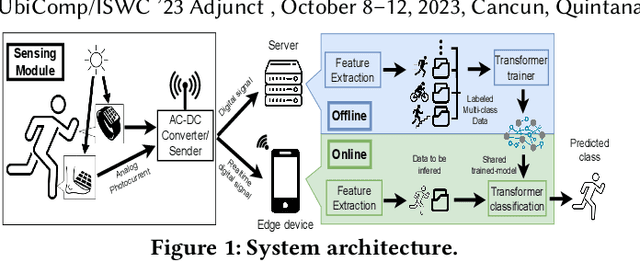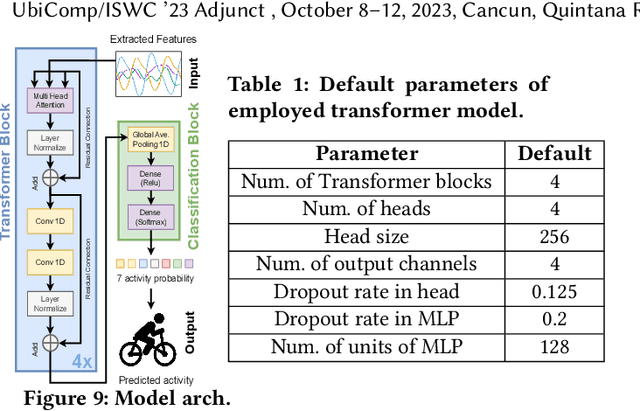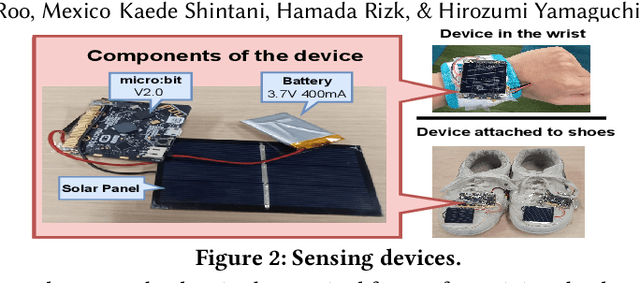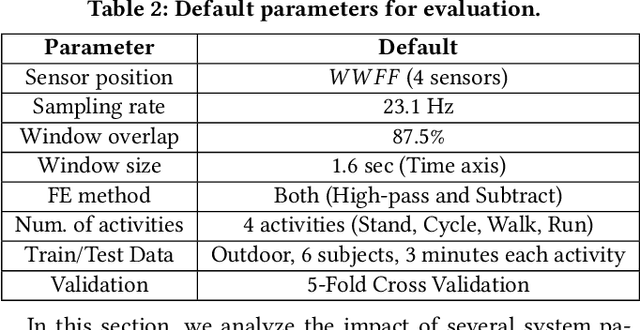Kaede Shintani
Energy-Free Sensing and Context Recognition Using Photovoltaic Cells
Mar 07, 2025Abstract:The field of energy-free sensing and context recognition has recently gained significant attention as it allows operating systems without external power sources. Photovoltaic cells can convert light energy into electrical energy to power sensing devices, but their power may not be sufficient to ensure energy-free sensing due to the varying power needs of sensors and high computational demands. In this paper, we propose the use of photovoltaic cells as a standalone sensor for the recognition of different contexts, including user identification, step counting, and location tracking. The system utilizes the photocurrent readings generated by the photovoltaic cells to capture the unique mobility patterns of different users. By analyzing these patterns, the system can accurately identify the user, count the number of steps taken, and track the user's location. We propose a computationally efficient DTW to match the variable length sequences of photocurrent readings to a database of known patterns and identify the closest subject and location matches. The system was rigorously evaluated in a realistic environment, and the results indicate that it can accurately estimate step count, identify subjects, and localize them with an accuracy of 88%, 90%, and 43cm, respectively. This is achieved while the proposed system is non-intrusive and can operate without external power sources, making it a promising technology for energy-free sensing and context recognition.
Eco-Friendly Sensing for Human Activity Recognition
Aug 10, 2023



Abstract:With the increasing number of IoT devices, there is a growing demand for energy-free sensors. Human activity recognition holds immense value in numerous daily healthcare applications. However, the majority of current sensing modalities consume energy, thus limiting their sustainable adoption. In this paper, we present a novel activity recognition system that not only operates without requiring energy for sensing but also harvests energy. Our proposed system utilizes photovoltaic cells, attached to the wrist and shoes, as eco-friendly sensing devices for activity recognition. By capturing photovoltaic readings and employing a deep transformer model with powerful learning capabilities, the system effectively recognizes user activities. To ensure robust performance across various subjects, time periods, and lighting conditions, the system incorporates feature extraction and different processing modules. The evaluation of the proposed system on realistic indoor and outdoor environments demonstrated its ability to recognize activities with an accuracy of 91.7%.
 Add to Chrome
Add to Chrome Add to Firefox
Add to Firefox Add to Edge
Add to Edge